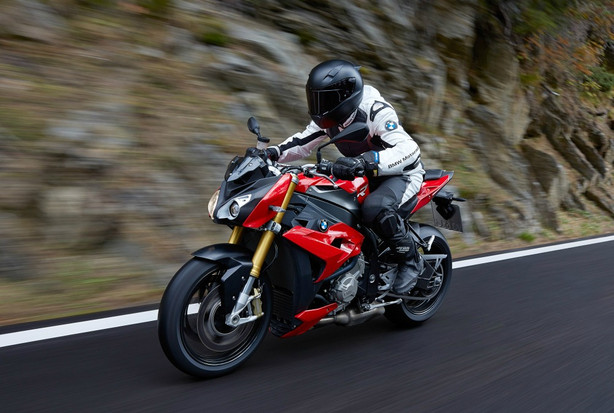
Ride a motorcycle? You're probably not as safe as you could be
This story is sponsored by Harrison Eurosports.
As motorcycle enthusiasts everywhere will tell you, being a great rider starts with learned skills, and it is honed through years of practiced techniques and time on the road.
When you've ridden for many years, the skills you need to keep you safe on the road start to become instinct, but even veterans can fall into bad habits if they're not consciously refreshing their knowledge and doing drills.
Ryan Stanley, general manager of Harrison Eurosports and organizer of annual motorcycle safety courses, said, "After four or five months of not riding in the winter, you could be rusty. Developing and maintaining the skills to scan for potential issues and identify inattentive drivers are extremely important for your safety."
As the long Utah winter ends, here are some tips you can use to warm up your riding skills and stay as safe as possible on the road.
Do a start-of-season review of the motorcycle operator manual
When you first got your motorcycle endorsement, you read through the motorcycle operator manual. When you're itching to get on your bike at the beginning of the season but the roads are still icy, take a look through the manual to refresh yourself on best practices and regulations. You never know what valuable information you've forgotten until you do a quick review.
Do drills when the weather warms up
Although inattentive motorists is often a root cause of accidents with motorcyclists, motorcyclist error is also a common reason for crashes and fatalities.
"The top causes of motorcycle fatal crashes (are) motorcyclists error, other vehicle error, motorcyclists driving under the influence, and motorcyclists running off the road on a curve," according to data from Utah collected by Zero Fatalities.
Using your senses to scan for potential issues off and on the road, adjusting your speed for curves and practicing your response time can all prevent motorcycle accidents. Even if you're a veteran, it never hurts to practice turns in a controlled area and even have an onlooker yell instructions to you to improve your spontaneous responses.
Stanley said, "Just like a runner stretches and warms up before a sprint, motorcyclists should warm up after a break to remind themselves what used to be instinctual."
Have defensive mindsets and techniques on city or canyon road
Because motorcycles are smaller, they are often difficult for drivers (particularly distracted ones) to see or assess their speed correctly. The brains of motorists might not even register you, especially if the driver of a car is unused to motorcyclists on the road.
According to Zero Fatalities data, "52 percent of motorcycle crashes involved another vehicle and 31 percent of drivers who hit motorcycles were turning left... Often, if a driver isn’t expecting to see a motorcycle, the brain doesn't always register them. This is referred to as inattentional blindness... Inattentional blindness occurs when an individual fails to recognize an unexpected stimulus that is in plain sight.


Sam Edney, a veteran BMW motorcycle rider and attendee of this year's Motorcycle Awareness Month's continued education course, said, "I always assume everyone is trying to kill me. That mindset keeps me aware and has helped me avoid accidents."
This defensive and alert mindset is useful in the city and in nature. Stanley said, "Around town, you can assume motorists are going to do the wrong thing. Assuming the worst will make you prepared for when something does go wrong. If you're driving up the canyon, make sure to scan for animals and to adjust your speed for curves."
Always wear protective gear
One of the best parts of riding a motorcycle is being in the elements: feeling the wind on your face and the sun on your back. You should, however, never feel the wind whipping through your hair.
According to Zero Fatalities, in Utah "over half of motorcycle fatalities were not wearing a helmet (53.6 percent)."
A thick leather jacket, protective pants and boots, and, most importantly, a properly sized helmet could save your life in the event of an accident. Even though it's tempting to drive away without your gear, make sure to put your safety first whenever you go out on a ride.
Enroll in educational courses to sharpen skills
May is Motorcycle Awareness Month. When the weather warms and you're ready to get back on the road, enroll in a review course to brush up on skills, do drills with an instructor and meet other motorcycle lovers.
Edney said, "I brush up on my skills in this continued education course every year. Because Utah winters are so long, I develop bad habits. This year, I worked on cornering (turning less sharply) with the instructors."
He also enjoys the social aspect of the motorcycle community. He said, "I know lots of people who go every year — it's like an extended family."
Take a look at the events Harrison Eurosports sponsors each year to help motorcycle riders address bad habits they might have developed over the winter break. A continued education course can help you master the art of riding and introduce you to others who share a passion for riding on the open road.![]()